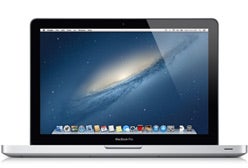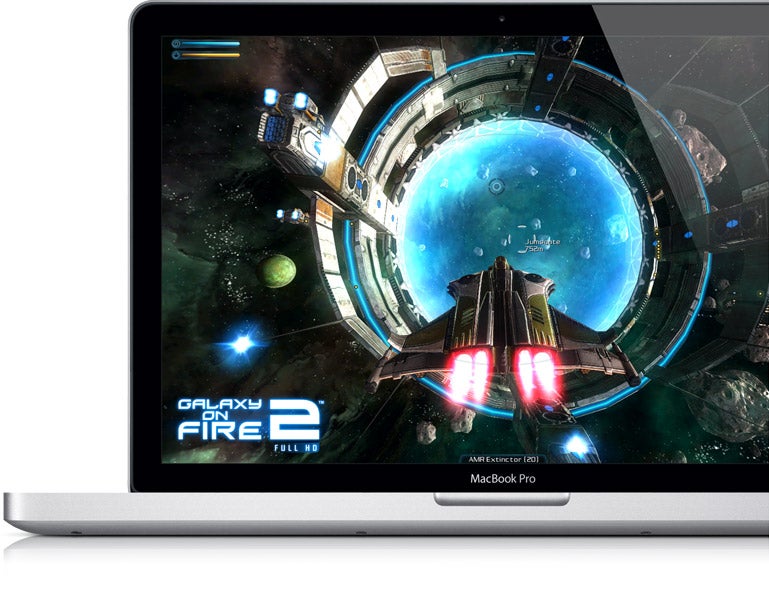Article
Moving to Mac Guide: Part 7 – Are Macs Good for Gaming?
- December 21, 2012
- Updated: July 2, 2025 at 8:40 AM
 Not so long ago, few people would have seriously recommended gaming on a Mac. With Apple’s switch to faster Intel processor chips, NVIDIA graphics cards and the growing popularity of Macs however, that situation is rapidly changing.
Not so long ago, few people would have seriously recommended gaming on a Mac. With Apple’s switch to faster Intel processor chips, NVIDIA graphics cards and the growing popularity of Macs however, that situation is rapidly changing.
Although PCs are still superior to Macs for gaming, Macs have come a long way evidenced by the fact that more and more major developers and gaming platforms are starting to embrace Mac. This final part of the Moving to Mac guide looks at exactly what stage Macs are at when it comes to gaming and some of the things you should consider when gaming on a Mac.
In 2010, the hugely popular gaming platform Steam launched its own Mac platform – an indication of how seriously developers were starting to take Macs. Major titles such as Portal, Civilization IV and Bioshock soon followed and 2012 saw the release of GTA San Andreas, Call of Duty Black Ops for Mac and Borderlands 2 for Mac.
Things are set to get even better for Mac users in 2013 with EA set to launch its online games store, Origin, for Mac possibly bringing games such as FIFA 13, Madden NFL 13 and PGA Tour 13 to the Apple platform. Sure, there are still many major titles still not available for Mac or that simply don’t get released alongside the Windows version but that is changing fast. In fact a study by Mac Gamer HQ found that the number of major games releases on Mac now just about equaled those on Windows.

Despite these huge improvements over the past few years however, there are three main issues that continue to put Mac gamers at a disadvantage.
Delayed release dates
One thing that Mac users have to constantly suffer is the late release of Mac titles. As the Mac Gamer HQ study also highlighted, developers frequently release games on Mac several months, or even years after the Windows version. Worse still, sometimes they promise a simultaneous release on both Windows and Mac but then suddenly leave Mac users in the dark as happened recently with FIFA 13 for Mac.
Call of Duty Black Ops was only released for Mac this year two years after it was released on Windows and there are still major games such as Guild Wars 2 (expected in 2013) and Need for Speed which are simply not available on Mac. This is undoubtedly one of the most frustrating aspects of gaming on Mac.
However, this is changing as major developers such as Epic and Blizzard start to acknowledge the growing number of Mac users and take advantage of the advancements in the capabilities of Macs for gaming. In addition, sometimes it is possible to “stream” games that are not available on Mac via services such as OnLive which deliver games to users regardless of the computer they are using. However, this can be very hit and miss as much depends on a fast, stable internet connection.
Game Performance
To achieve the same gaming experience as on a PC, you’ll definitely need a high end Mac such as an iMac or MacBook Pro and it will certainly have to be a model later than 2010. Most games that play natively on a Mac perform extremely well, especially on the latest MacBook Pros with the GeForce NVIDIA video cards.
If a game isn’t available on Mac, you can install Windows on your Mac using Bootcamp and turn your Mac into a PC. This works perfectly well and users should notice little difference between gaming this was and gaming natively on a PC. Note that virtual environments such as Parallels and Virtual Box are not suitable for gaming on Mac – they simply can’t dedicate enough resources to running OS X and Windows at the same time to make high-end gaming feasible.
Upgrading RAM
One area where PCs definitely have an advantage is when it comes to upgrading. Macs, especially the newest generation, are virtually impossible to upgrade. For instance, you cannot upgrade the RAM (or even the battery) in the new Retina MacBook Pros, although the largest 27 inch iMac does allow you to upgrade RAM.
This is compared to PCs which can have their RAM upgraded easily to satisfy the increasing demands of high-end games. However the good news is, with a minimum of 8GB of RAM and Flash memory in the latest MacBook Pros and iMacs, you shouldn’t need to upgrade for a long time.
The processing speed of the newest Macs also shouldn’t need upgrading for a long time either as they feature quad-core processors with speeds of up to 3.6Ghz. And remember that both RAM and processing speed can be upgraded on your Mac if you customize your build at the point of purchase.
The bottom line is that gaming on Macs is definitely increasing in popularity amongst both developers and users. If you’re a serious PC gamer, you should still stick to Windows but even that could change in the next few years.
This concludes our Moving to Mac Guide. We hope it’s been helpful. Don’t forget to check out previous parts:
Moving to Mac Guide: Part 1 – The Basics of OS X
Moving to Mac Guide: Part 2 – How to Install Apps
Moving to Mac Guide: Part 3 – Connecting Hardware
Moving to Mac Guide: Part 4 – Alternatives to Windows Apps
Moving to Mac Guide: Part 4 (cont.) – More Alternatives to Windows Apps
Moving to Mac Guide: Part 5 – Maintenance
Moving to Mac Guide: Part 6 – Do Macs Get Viruses?
You may also like
 News
NewsIf after Death Stranding you are left wanting more games about walking, this game wants to show you how difficult it is to walk when you don't know how to do it
Read more
 News
News'Catwoman' not only killed DC in cinema for years. It also destroyed a legendary video game studio
Read more
 News
NewsDisney stopped this adaptation of one of its best animated films. Now it has restarted it
Read more
 News
NewsGame Pass announces the first batch of games for October, including two classic RPGs and the most anticipated action game of the year
Read more
 News
NewsDwayne Johnson and Emily Blunt have a special chemistry on screen, and this classic available on Disney+ proves it
Read more
 News
NewsEA alienates its community again with an overpriced cosmetic pack, this time in skate
Read more